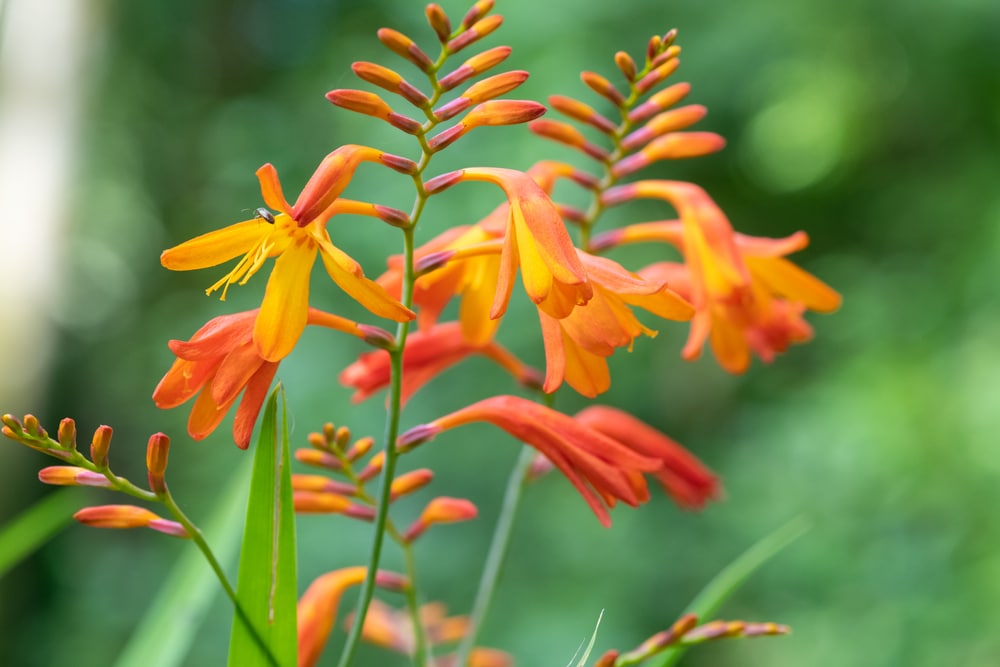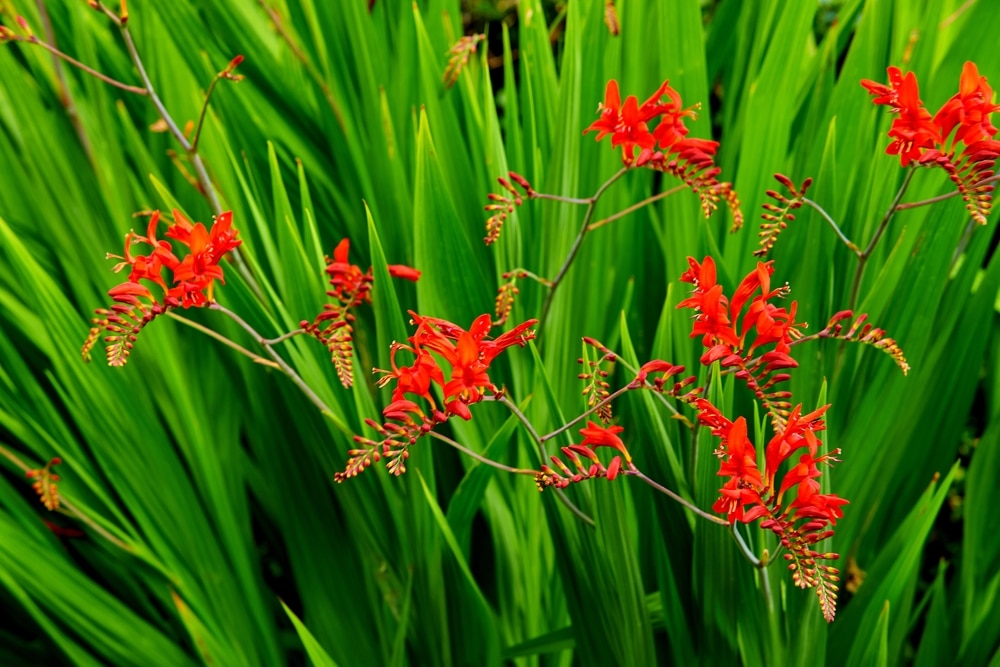Why won’t my Crocosmia bloom? Whether you planted crocosmia in your garden for the first time or suddenly not having luck with getting it to bloom this season, several reasons could be the cause.
Why Won’t My Crocosmia Bloom
Luckily, determining why your crocosmia isn’t blooming is usually straightforward, and the fix is often simple.
Your Plant Is in Shock
People aren’t the only creatures that can go into shock. So, if this is your first year planting crocosmia and it’s via transplanting instead of growing it from seeds straight in your garden, your crocosmia might not be blooming because of transplant trauma.
Aside from the physical aspect of moving your plant, some other reasons that crocosmias might go into shock include due to a change in:
- Sunlight
- Watering habits
- Soil conditions
- Temperature
The good news is that you don’t have to do anything if your crocosmia doesn’t bloom in the first year due to shock. It’s a common situation, and you can expect your plant to bloom well the following year if you provide it with the right growing conditions.
Excessive Fertilizer
One of the most common reasons that crocosmia plants don’t bloom is that they receive too much fertilizer. A high amount of nutrients will cause your crocosmia to grow thick, abundant foliage.
But unfortunately, all that foliage is at the expense of the plant, driving nutrients into producing flowers. An overfertilized crocosmia often generates some flowers, but they’re so sporadic that they fall short of a gardener’s expectations.
Crocosmias originate from the rocky, nutrient-deficient soil of South Africa. So, they don’t have genes requiring lots of fertilizer.
The best way to fertilize crocosmias, should you feel that your plant needs some nutrients, is to mix some organic compost into the soil, letting nature do its work.
Not Enough Sunlight
Crocosmias are sun-seeking plants. They require full sun, allowing them to produce the maximum amount of flowers.
Interestingly, if you plant two crocosmias plants in the same garden under the same soil and water conditions but put one in full sun and the other in partial shade, the crocosmia receiving full sunlight will produce significantly more flowers than the one in partial shade.
Solving a sunlight issue with crocosmias is easy—simply transplant them to an area where they’ll receive direct sun.
Remember that you might need to wait another year before enjoying a fully flowering plant, given that your crocosmias might need time to adjust after the trauma of their move.
Insufficient Water
Although crocosmias can handle mild drought conditions, it isn’t the ideal environment for them to produce flowers. So, if you’ve had dry weather and haven’t been watering your plant, this could be why it isn’t blooming.
Ideally, you should water your crocosmias with about one inch of water per week. That’s assuming that mother nature hasn’t been helping with watering, of course.
These deeper and less frequent waterings will help your crocosmia’s roots grow deeper, enabling them to seek water on their own more easily.
Of course, overwatering can have a detrimental impact on a crocosmia’s blooming ability as well. Growing them in well-draining soil is essential to avoid conditions like root rot.
Why Won’t My Crocosmia Bloom: Wrap Up
So, if you are wondering, “why won’t my crocosmias bloom?” Remember that crocosmias are perennials and can live up to 20 years. Don’t get discouraged if they don’t bloom the first year you plant them. That’s normal, and you’ll have many chances to do trial and error to get them to flower.
In most cases, environmental conditions are the reason that crocosmias don’t bloom. But by following the strategies and best practices we shared here, you can expect to see your plant with flowers before long.

